
Tyre markings on a tractor
How to read the markings on a tyre?
SUMMARY:
Tractor tyre size explained in less than 5 minutes
To get straight to the point, here's a video giving you the main points about tyre markings. We'll go into more detail in the rest of the article.
A concrete example of tractor tyre size
To watch this video, you'll have to accept some cookies from Youtube platform. Just click on the button below to open the cookie module.
Accept youtube cookiesLet's take a concrete example with a MICHELIN Xeobib tyre and look closely at what the tyre markings on the sidewall mean:
MICHELIN: The manufacturer's brand always appears on the sidewall of the tyre.
XeoBib: The name of the range (here "Xeobib") is indicated near the brand. A range is designed to suit a particular type of vehicle and to meet a specific need.
VF = stands for "Very High Flexion": This prefix designates a standardised category of tyres - Tyres designed to bear 40% more load at the same pressure(2). At Michelin, the VF or IF standard corresponds to our MICHELIN UltraFlex Technology tyres , which allows longer footprints to limit soil compaction and rutting.
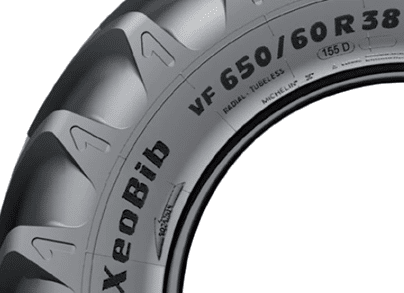
the tyre size is part of the tractor s tyre markings
Then we find the tyre markings that corresponds to the size:
650: Nominal section width in mm. This tyre marking corresponds to the distance between the left and right sidewalls of the tyre.
60: Aspect ratio in % (sidewall height/nominal section width). In this example the height of the sidewall is 60% of the nominal section width of 650mm.
R: Defines the structure: “R” is for radial. If it wasn't a radial tyre, a simple dash "-" would designate it as a cross-ply tyre.
38: Nominal diameter of the rim in inches.
155: Standardised load index. This is an index corresponding to the nominal load the tyre can support. You can consult our load index chart to find out the maximum load in kilos corresponding to your load index.
D: Standardised speed index. This is an index corresponding to the maximum speed This is an index corresponding to a maximum speed at which the tyre can be driven. See our speed index chart.
Radial: Construction type.
RC = "Rolling circumference" in mm
E = Tyre section width in mm.
Tubeless: Tyre without an inner tube
Michelin® X®: Trademark
Other tyre markings that may appear on the sidewall
Let's go through the list of tyre markings that may be found on the sidewall of a tyre and their corresponding information.
IF = "Improved Flexion": This prefix designates a standardised category of tyres designed to bear 20% more load at the same pressure.(1)
VF = "Very High Flexion": As seen in our example above, this prefix designates a standardised category of tyres designed to bear 40% more load at the same pressure(2).
PFO = "Pressure Field Operation": This tyre marking is an ETRTO* standard that enables tractor IF/VF tyres to bear a higher load at a lower speed (1)(2). *ETRTO = European Tyre and Rim Technical Organisation

Other AG tyre markings
CFO = "Cyclic Field Operation": implies an improved cyclic field operation. CFO indicates that tyres are designed to provide additional load capacity in the field over 1.5 km maximum.(3)
TL = "Tubeless": which means that the tyre has no inner tube. At Michelin, we only manufacture tubeless tyres for agricultural machinery.
IMP = "Implement": This tyre marking means that the tyre is mainly designed for implements or trailers. It can also equip the front steering wheels and drive wheels of farming tractors and forestry tractors but is not suited for sustained work at high torque.
IND = "Industrial": Marking on tyres for construction applications with load and pressure capacities that are different from tyres with the same designation and the same size for agricultural applications.
NRO = "Narrow Rim Option": Experimental ETRTO standard that must be approved. It allows a much narrower rim to be used than the one normally authorised by ETRTO for IF and VF tyres.
CAI = "International article code": Identifies a product with a specific, unique 6-digit code
SRI = "Speed Radius Index": Parameter used to calculate the theoretical speed of vehicles during standardisation procedures in the European Union and for the interchangeability of different tyre sizes.
Pictograms
Pictograms are additional tyre markings that can be found on MICHELIN tyres. Here's what they mean.
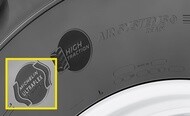
MICHELIN Ultraflex technology pictogram
MICHELIN Ultraflex
MICHELIN Ultraflex Technology, invented by Michelin in 2004, is a game-changing innovation that enables agricultural vehicles to use much lower pressure and thus protect the soil, increasing crop yields. This symbol means that the tyre is equipped with this technology.

high traction pictogram
High Traction
This pictogram means that your tyre has been designed to provide high level of grip for a better traction in the field.
To find out more, read our article on "How to improve traction"
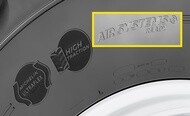
air systems ready pictogram
Air system ready
If the tyre is "Air Systems Ready", it is compatible with the CTIS (Central Tyre Inflation System), which allows you to control tyre pressure from your cab.
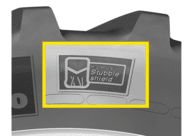
stubble shield pictogram
Stubble shield
This pictogram means that the tyre is designed with special protection against stubble damage.
See our article on tyre damage.
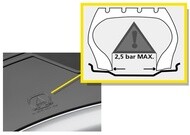
Maximum fitting pressure pictogram
Maximum fitting pressure
This symbol does not indicate the maximum pressure for driving with the tyre, but the maximum pressure when fitting the tyre to the rim.
Don't forget to adjust to the correct pressure once the tyre is fitted.
To find out more, read our dedicated article.
Casing and rim dimensions
"It can also be useful to know what the dimension of the casing and the rim are. The diagram below offers an explanation:
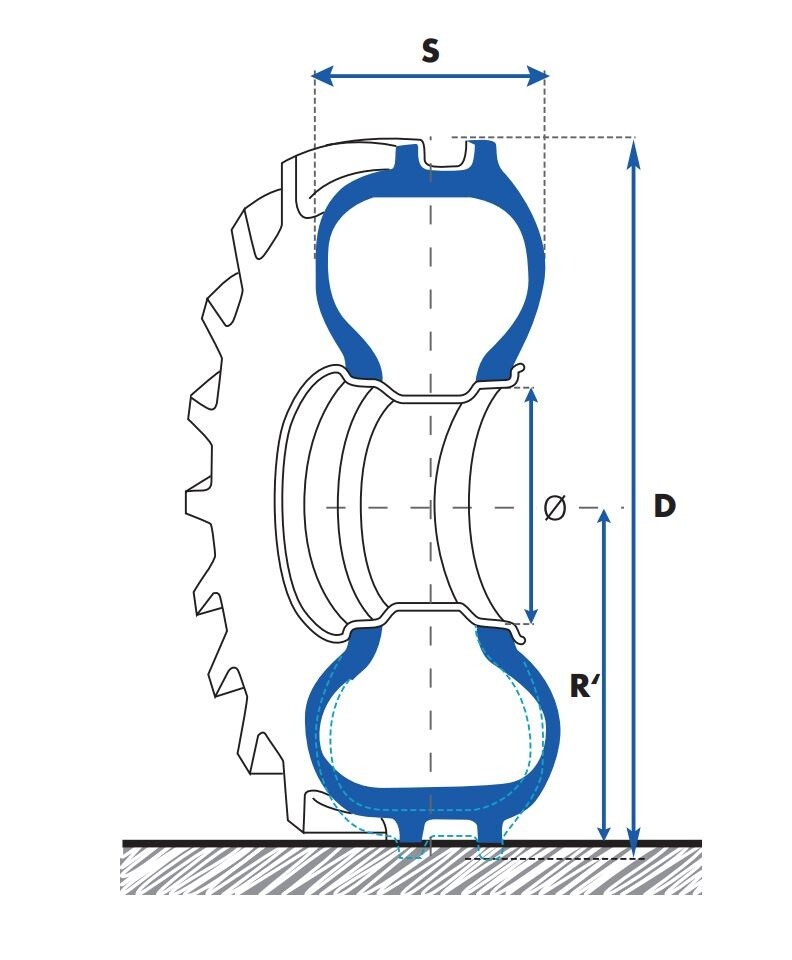
Casing and rim dimensions
Casing
S: Section width of the tyre
R': The Static Laden Radius in mm.
R: Radius without load
D: External diameter, equal to 2 x R
Rim
Ø: Rim diameter in inches
F: Internal width
H: Section height
To know more about rims, discover our article on "Understanding Rims, Inner tubes and Valves".
Other articles to find out more:
Need more advice? Discover our tyre basics guide
(1) Compared to non IF (High Flexion) tyre
(2) Compared to non VF (Very High Flexion) tyre
(3) Compared to non CFO tyre




